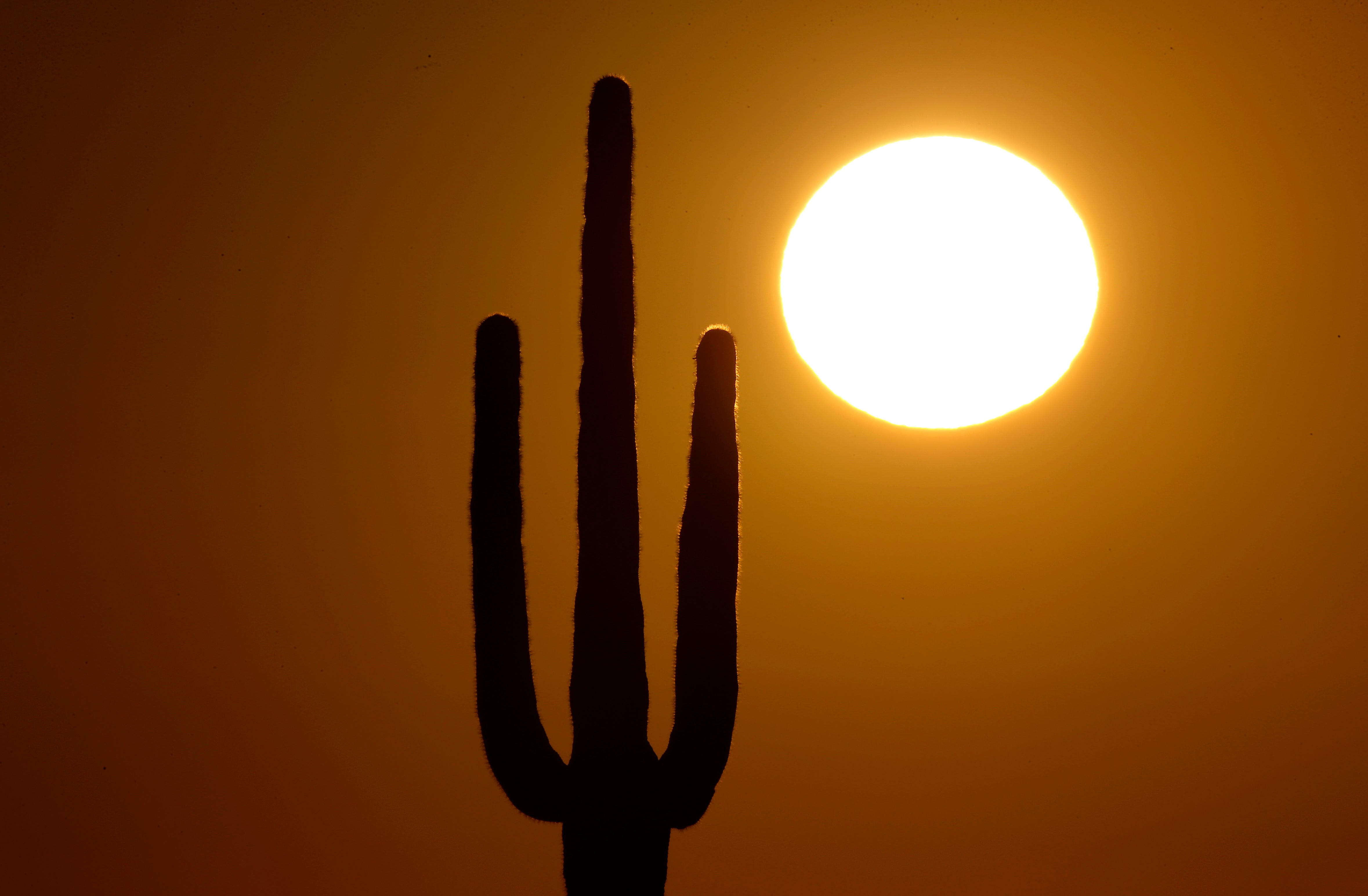An unlikely victim of Phoenix’s extreme heat: The cactus
Cacti are well-adapted to heat, but the climate crisis is pushing them to the brink
Your support helps us to tell the story
From reproductive rights to climate change to Big Tech, The Independent is on the ground when the story is developing. Whether it's investigating the financials of Elon Musk's pro-Trump PAC or producing our latest documentary, 'The A Word', which shines a light on the American women fighting for reproductive rights, we know how important it is to parse out the facts from the messaging.
At such a critical moment in US history, we need reporters on the ground. Your donation allows us to keep sending journalists to speak to both sides of the story.
The Independent is trusted by Americans across the entire political spectrum. And unlike many other quality news outlets, we choose not to lock Americans out of our reporting and analysis with paywalls. We believe quality journalism should be available to everyone, paid for by those who can afford it.
Your support makes all the difference.Even the iconic saguaro cactus, known as the Sentinel of the Southwest, is struggling with Arizona’s record-breaking heatwave.
Cities like Phoenix have endured nearly a month straight of temperatures above 110 F, without the relief of usual seasonal monsoons, and it’s taking a toll on the towering cactus species.
“Everyone looks at cactus and say, ‘Oh, these are desert plants, so they should be just fine.’ But cactus are living things,” Kimberlie McCue of the city’s Desert Botanical Garden told Fox 34 on Friday. “They literally can’t function, and the way I describe it is they start to suffocate.”
The massive cacti, which can live as long as 200 years and grow up to 40 feet tall, are well-adapted to living in the desert heat.
During normal conditions, they open their pore-like stomata at night to carry out the key gas exchanges that power their photosynthesis process during the day, according to CNN.

However, during periods of excessive heat, this process gets disturbed, causing the cacti to become stressed, dehydrated, and more succeptible to infection and infestation.
Ms McCue said if saguaros start to tilt, appear squishy, or begin yellowing, they’re in trouble, and there’s little that can be done to save them.
“If that plant is really starting to shut down, doesn’t matter how much water you pour on them, they won’t be able to take it up and do anything with it,” she said.
The famous flora of the desert isn’t alone in its troubles at the moment.
The heat wave hitting Arizona, driven in large part by the climate crisis, is also putting heavy strain on humans.
Not counting this week, at least 25 people have died heat-related deaths this year since April, accoring to officials, and another 249 deaths are under investigation.
As The Independent has reported, extreme heat is one of the most dangerous climate change impacts, even though it’s discussed less in the mainstream conversation than other forms of extreme weather like drought or hurricanes.
Heat kills more Americans than all other disasters combined each year.
The United Nations has warned the world is entering the era of “global boiling,” with July coming in as what’s thought to be the hottest month on record in the last 120,000 years.



Join our commenting forum
Join thought-provoking conversations, follow other Independent readers and see their replies
Comments